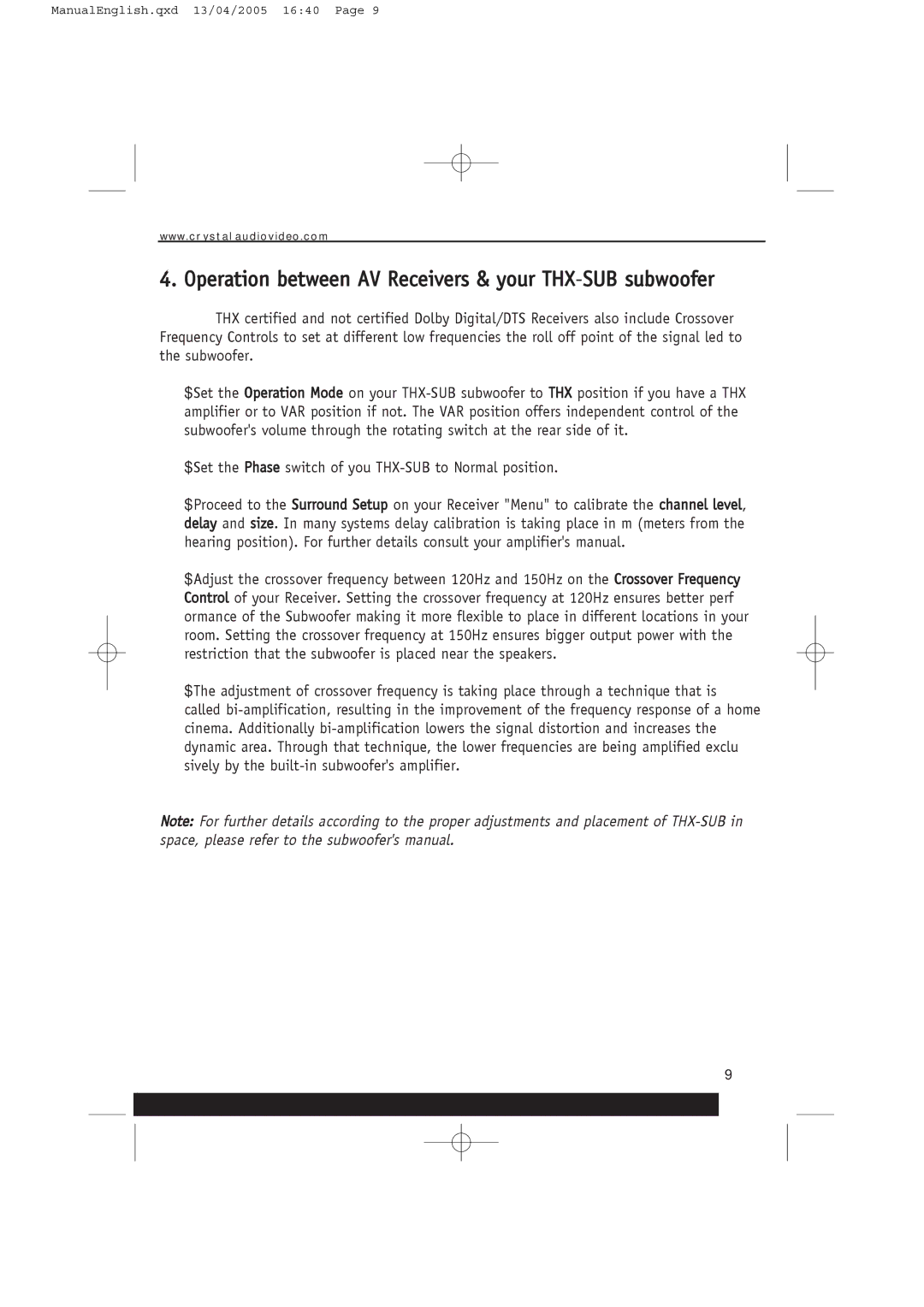SmArt specifications
Crystal Audiovideo SmArt stands at the forefront of innovative audio-visual technology, heralding a new era in home entertainment systems. This state-of-the-art platform is designed to enhance the way we experience sound and vision, offering an array of advanced features and technologies that cater to the demands of modern consumers.One of the standout characteristics of Crystal Audiovideo SmArt is its immersive 4K Ultra HD resolution. This technology delivers stunningly sharp images with vibrant colors, allowing users to enjoy their favorite movies, TV shows, and video games with unprecedented clarity. Coupled with high dynamic range (HDR) support, the system maximizes contrast and color fidelity, ensuring that even the most subtle details are rendered with breathtaking accuracy.
In terms of audio quality, Crystal Audiovideo SmArt incorporates advanced surround sound technologies that create an engaging auditory environment. The system is equipped with Dolby Atmos, which enables sound to flow in a three-dimensional space. This technology allows users to hear sounds from above and around them, immersing them in their entertainment like never before. Additionally, the platform supports high-resolution audio formats, ensuring audiophiles can enjoy music with pristine clarity.
Seamless connectivity is another hallmark of Crystal Audiovideo SmArt. The system includes a variety of input options, such as HDMI, optical audio, and USB ports, making it easy to connect multiple devices. Furthermore, built-in Wi-Fi and Bluetooth support enable wireless streaming, allowing users to access their favorite content from smartphones, tablets, and computers effortlessly.
The user interface of Crystal Audiovideo SmArt is designed for ease of use, featuring an intuitive layout that simplifies navigation. It supports voice control technologies, making it convenient for users to command their systems hands-free. This integration with smart home systems provides the opportunity to create custom automation routines, enhancing the overall entertainment experience.
Finally, with regular software updates, Crystal Audiovideo SmArt continues to evolve, ensuring that users always have access to the latest features and security enhancements. As multimedia consumption grows increasingly sophisticated, Crystal Audiovideo SmArt positions itself as a premier choice for those seeking the best in home audio-visual experiences. With its blend of cutting-edge technology, rich features, and user-friendly design, it represents the pinnacle of modern entertainment solutions.

